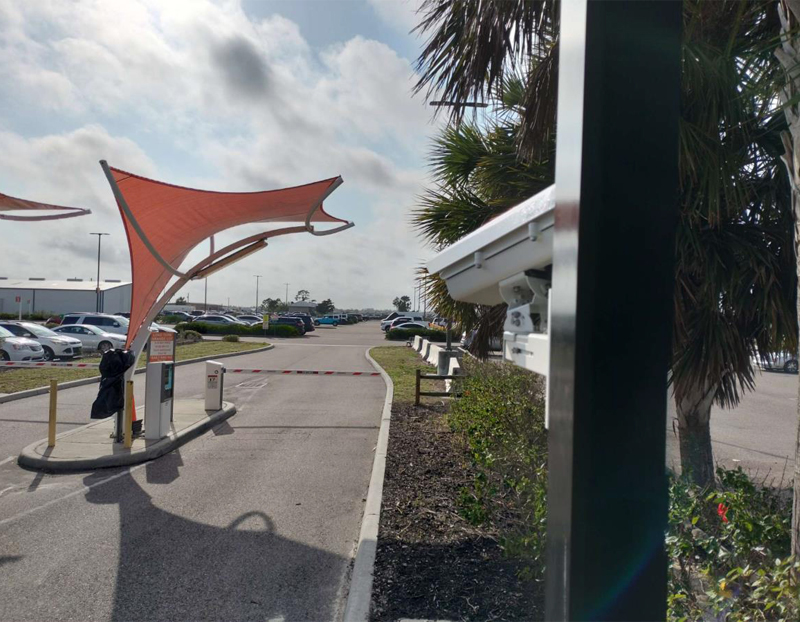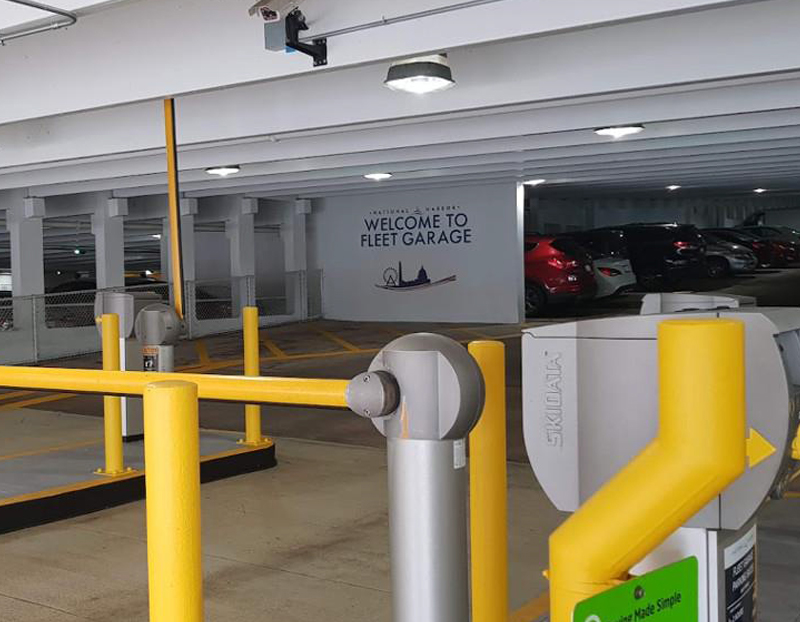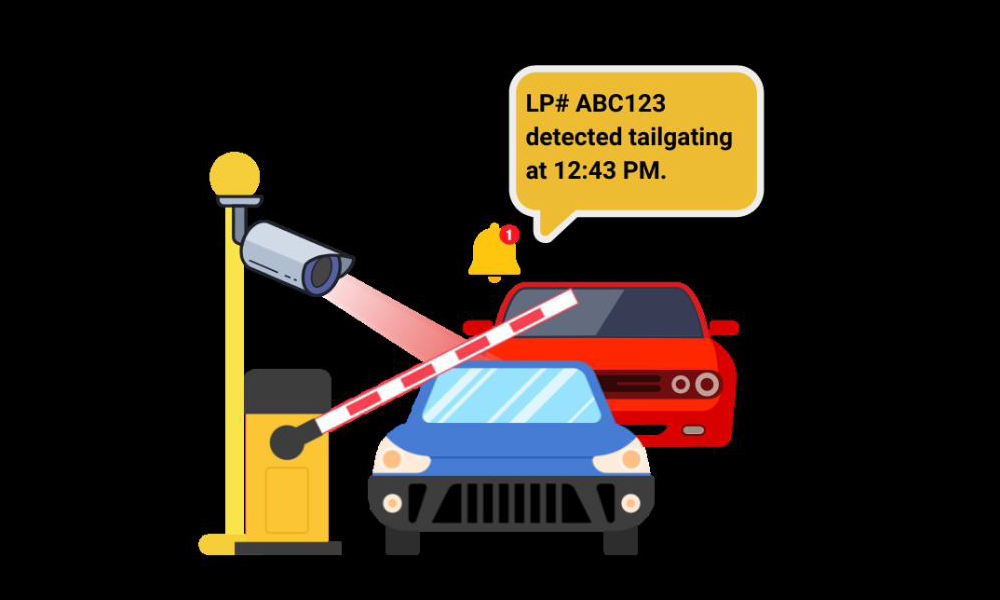Stop Tailgating in Parking Lots: How LPR Protects Revenue and Safety
Today’s parking operators can address this growing problem with Automatic License Plate Recognition (ALPR), a modern technology that identifies and deters unauthorized exits in real time.
What Is Vehicle Tailgating in a Parking Facility?
In places with high turnover or tight budgets, even a few unpaid exits a day add up quickly – impacting profitability and operational planning.
Traditional Anti-Tailgating Solutions (and Their Shortcomings)
Many operators have tried to stop tailgating with:
- Dual-gate “trap zones”: Only one car is allowed through at a time. Effective but costly, space-intensive, and slow.
- Fast-closing gates and warning signs: These create urgency but don’t guarantee enforcement.
- Security cameras: Visible deterrents, but without enforcement mechanisms, they’re often ignored.
These solutions may reduce casual violations but struggle against repeat offenders, especially when enforcement isn’t automated.
Smarter Enforcement: ALPR Detects and Deters Tailgaters
Fast and accurate license plate recognition (LPR) offers a better way to stop tailgating without creating exit delays or requiring major infrastructure changes. Here’s how it works:
- Continuous Camera Monitoring: High-res ALPR cameras scan every exiting vehicle’s plate.
- Cross-Check With Parking Records: The system verifies if the vehicle has paid or is authorized.
- Flagging Unauthorized Exits: Plates without matching records are marked as potential tailgaters.
- Capturing Video Evidence: The system saves images, timestamps, and footage for enforcement.
- Instant Alerts: Operators receive real-time notifications with license plate data and proof.
Enforcing Against Parking Lot Tailgaters with License Plate Recognition
Once a tailgating incident is identified:
- Municipal lots can issue citations via mail based on camera evidence (like red-light violations).
- Private operators can send invoices, charge accounts on file, or add violators to a deny list for future parking sessions.
These enforcement options ensure that violators are held accountable—even after they’ve exited the facility. And with time-stamped video and plate imagery, disputes can be resolved easily.
Why LPR Enforcement Is the Right Move for Parking Facilities
- No disruption to legitimate parkers
- Highly accurate detection (99%+ read rates)
- Reduced tailgating over time through visible enforcement
- Valuable analytics on peak times and repeat violators
- Dual-use cameras can also support ticketless entry and security monitoring
With license plate recognition systems, operators gain not only enforcement but also insights and operational flexibility.
Legal Policy Considerations and Signage
Both public and private parking facilities can use LPR for enforcement, as long as:
- Signage clearly states the facility is under video enforcement
- Enforcement follows local laws and privacy requirements
- Terms of use disclose that unauthorized exit may lead to fines or fees
Proper compliance ensures that video-based enforcement remains defensible and effective.
You’re right—the legal and policy section in the shortened version lost key distinctions and details from your original. Here’s a revised, fuller version that preserves your original intent and structure while integrating the keywords ALPR, LPR, and license plate recognition for SEO:
Legal and Policy Considerations for Enforcing Tailgating with ALPR
Public Sector Enforcement of Parking Violations via ALPR
For municipalities and other public agencies, ALPR-based enforcement is often legally straightforward. Many states and cities already use license plate recognition to issue citations for red-light or toll violations, and similar principles apply to unpaid parking exits. Tailgating can be treated under existing local ordinances or state vehicle codes as a civil violation—akin to fare evasion or toll jumping.
To stay compliant and enforceable, cities must ensure:
- Clear signage at facility entrances that notifies drivers of video surveillance and ALPR enforcement.
- Due process procedures, such as requiring that a human official reviews and approves violations before issuing a citation.
- Timely notification to vehicle owners via mail or electronic means, as mandated by local rules.
For example, a city like Santa Monica could use ALPR-generated evidence to issue fines or collect unpaid fees from tailgaters after the fact. This transforms a previously unenforceable behavior into a trackable, billable violation—without requiring gate modifications or slowing down traffic flow.
Private Parking Enforcement Using License Plate Recognition
Enforcing tailgating violations in private parking facilities is more nuanced but entirely possible with the right legal and operational framework.
While private entities don’t typically have the authority to issue government-backed traffic citations, they can still pursue enforcement through:
- Civil liability mechanisms (e.g., sending invoices to the registered vehicle owner).
- Enforcement through contracts (e.g., when a user agrees to terms and conditions by entering the facility).
- Cooperation with local law enforcement in jurisdictions where tailgating may qualify as theft of services or trespassing.
Some private operators also leverage license plate data to:
- Automatically charge the credit card on file for the violating license plate (if pre-registration or mobile pay is used).
- Add the license plate to a deny list that blocks future entry.
- Flag repeat offenders for booting, towing, or in-person enforcement upon return.
Success in the private sector relies on proper legal setup, including:
- Prominently displayed terms of service at entrances stating that by entering or exiting the facility, drivers consent to surveillance and agree to pay any applicable fees.
- Accurate record-keeping and audit trails, especially for facilities using ALPR to automate enforcement actions.
- Adherence to privacy laws, especially around data retention and sharing of license plate information.


Data Privacy and Signage Requirements for LPR Use
Both public and private operators using ALPR systems must comply with state-specific privacy regulations, many of which govern how long license plate data can be stored, whether it can be shared, and how users must be notified.
Common requirements include:
- Signage at the lot or garage entrance indicating that license plate recognition technology is in use.
- Disclosure of enforcement policies, either on the lot, on printed tickets, or within digital terms of use.
- Justification of data collection for operational and enforcement purposes.
- Retention limits, ensuring that license plate images and related data are not kept longer than necessary.
Some states treat LPR data as personally identifiable information (PII), which subjects it to additional protections under consumer privacy laws. Operators should consult with legal counsel to develop compliant data handling practices, especially if the enforcement process involves third parties such as collection agencies.
Conclusion: Prevent Tailgating, Protect Revenue, and Modernize Parking
Tailgating is no longer an unsolvable problem. ALPR enforcement technology enables operators to identify unauthorized exits, recover lost revenue, and reduce liability—without slowing down traffic flow.
Whether you’re managing a garage, lot, or gated facility, license plate recognition offers a scalable, low-friction way to ensure every vehicle pays its fair share.
Don’t let tailgaters slip through. Use ALPR to secure your parking facility and protect your bottom line.

